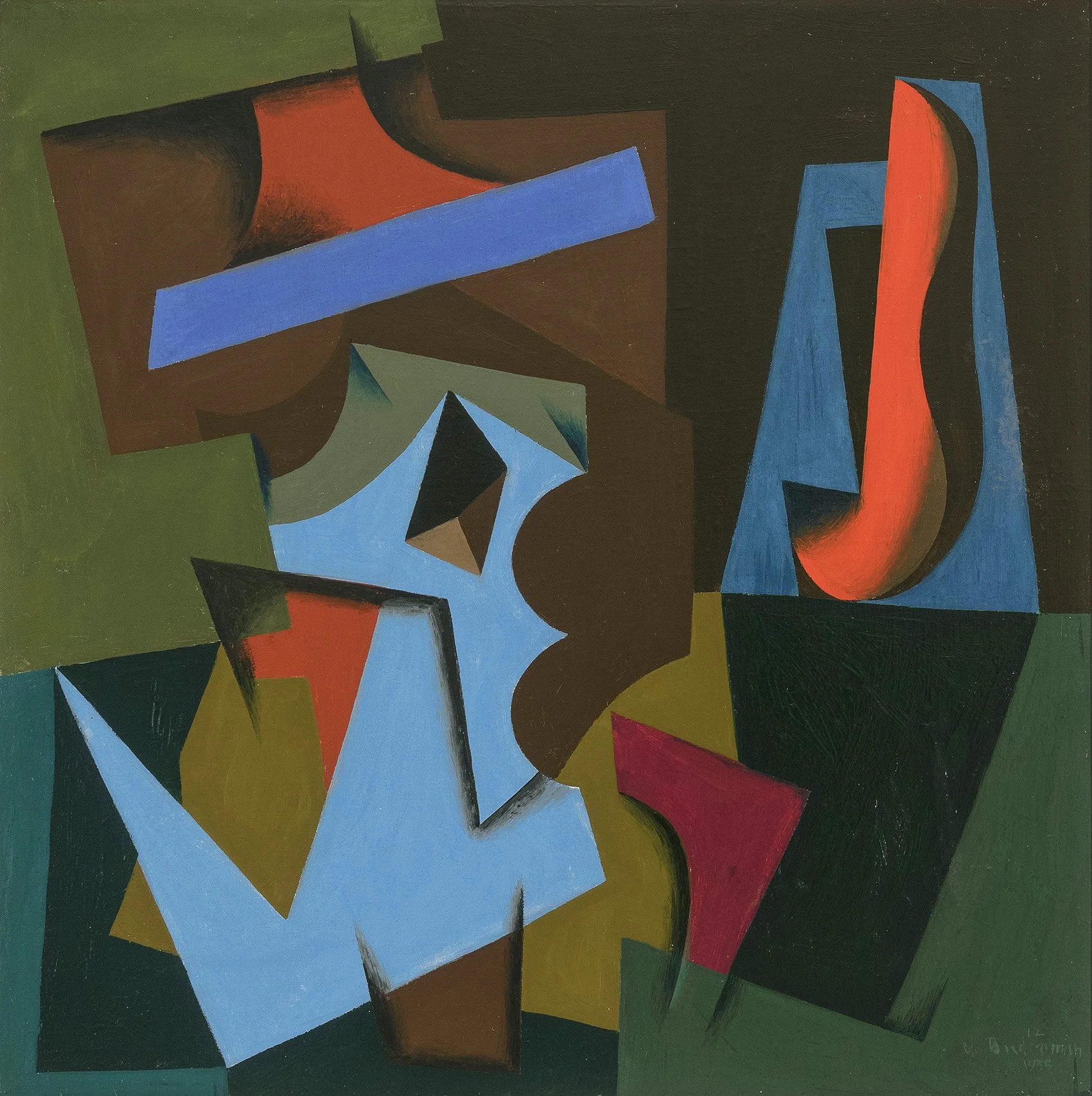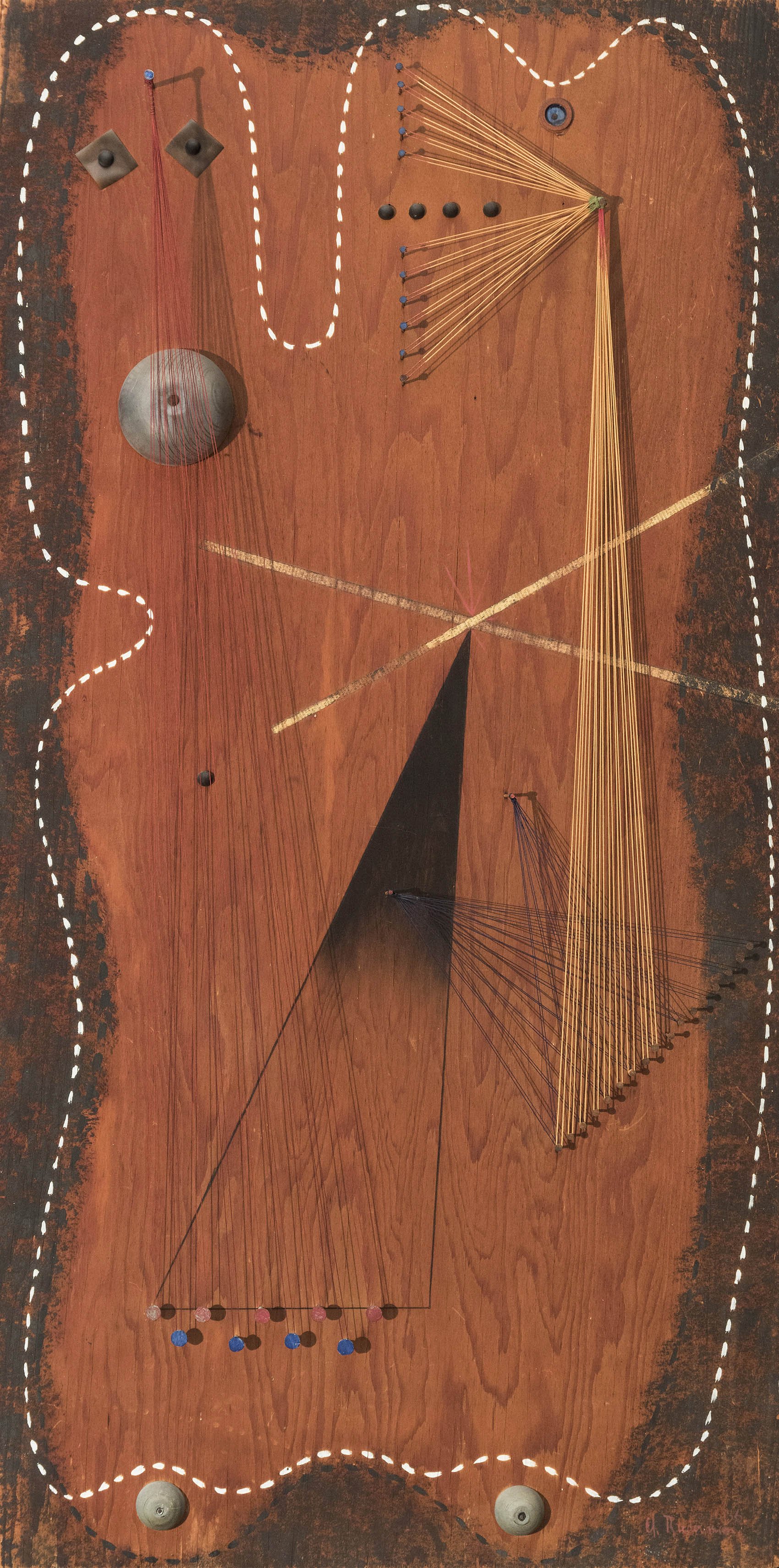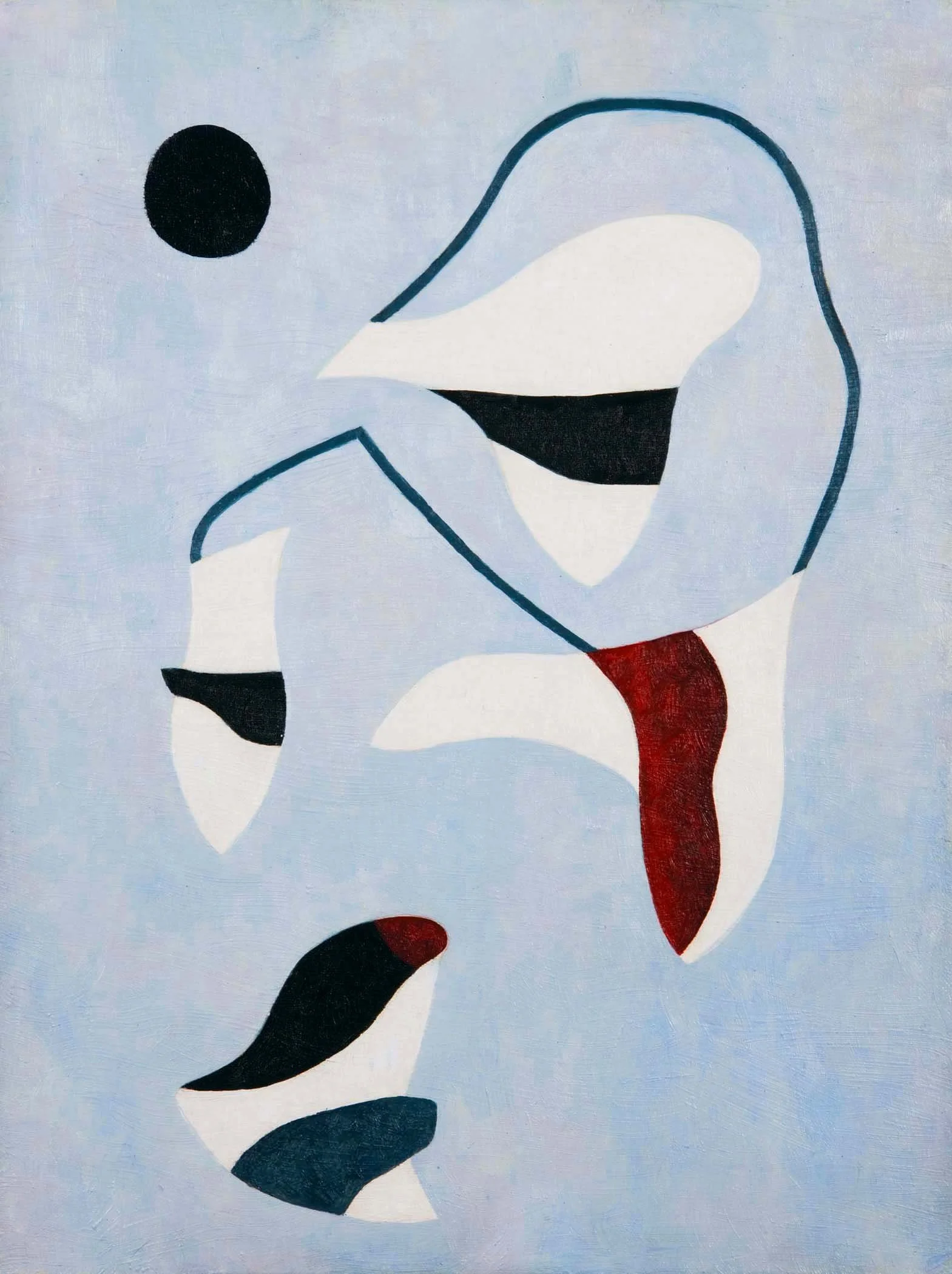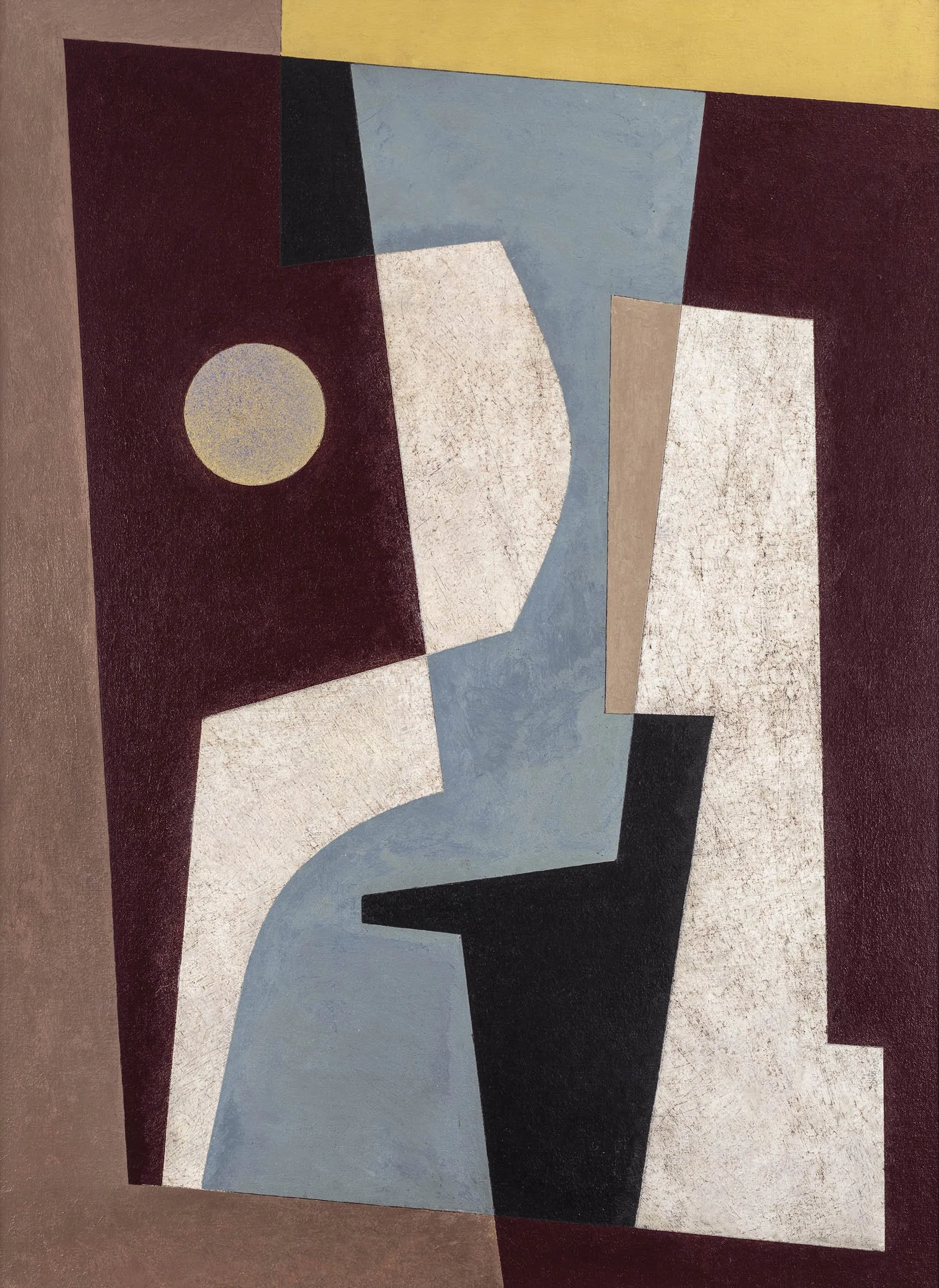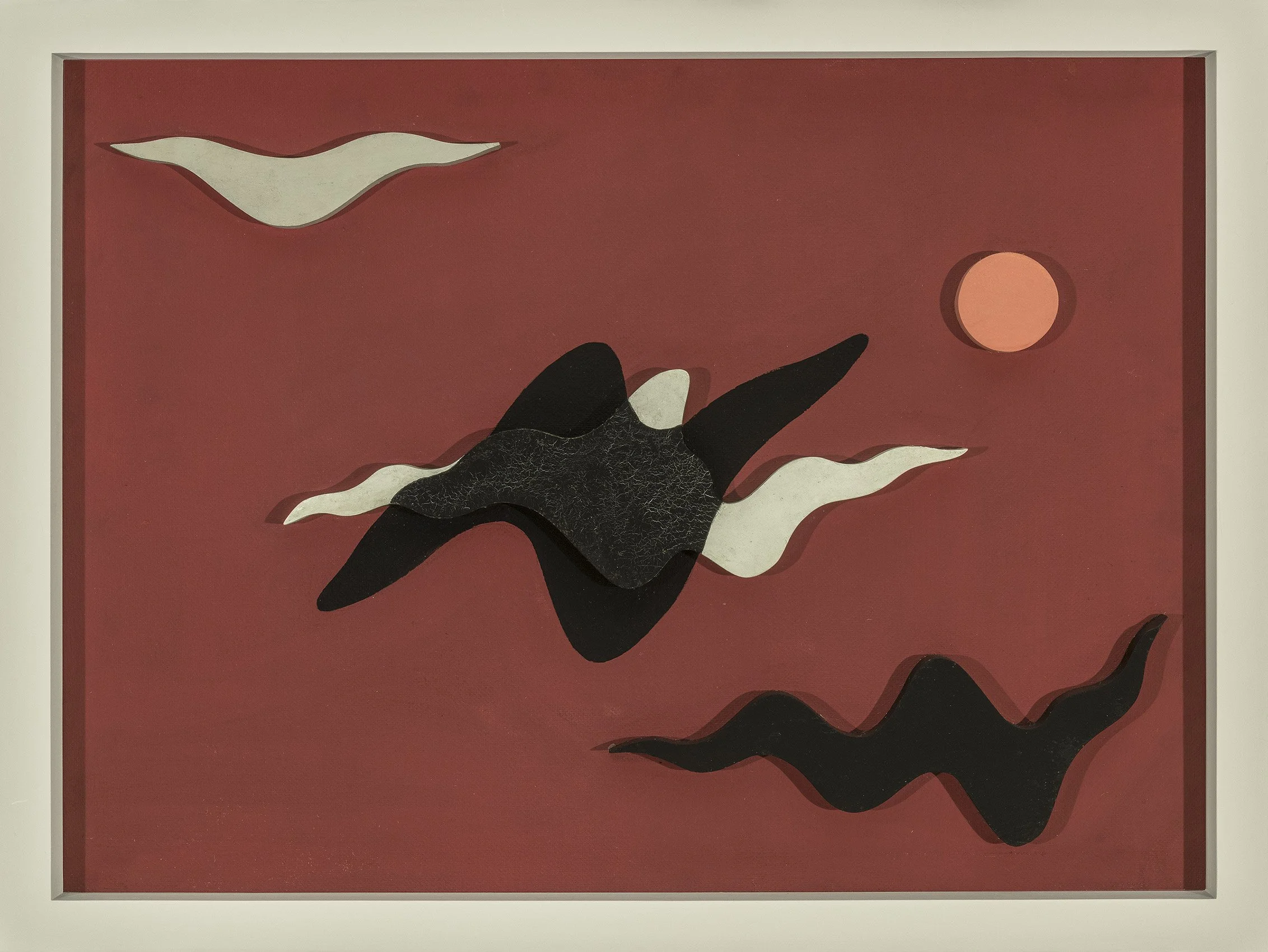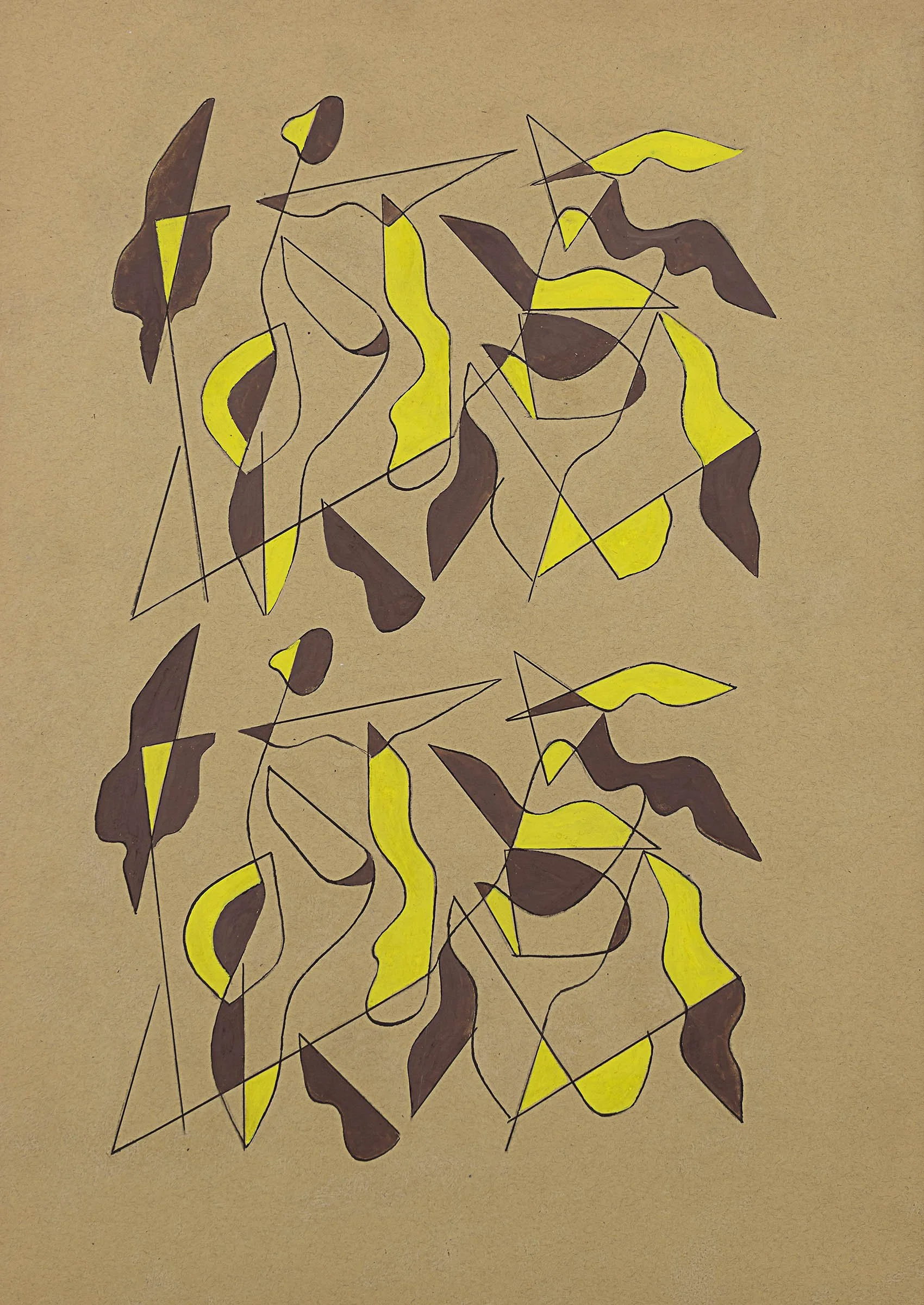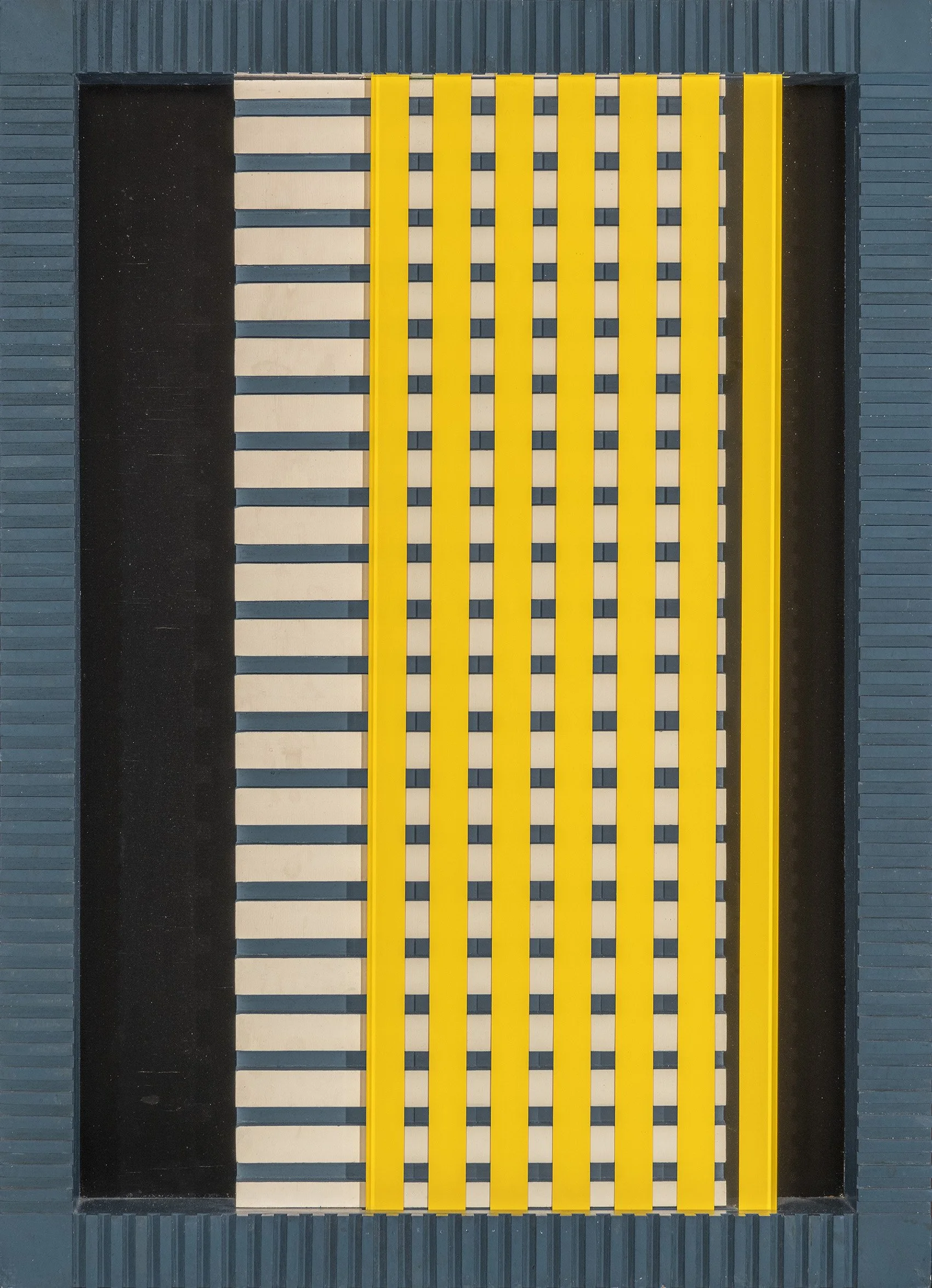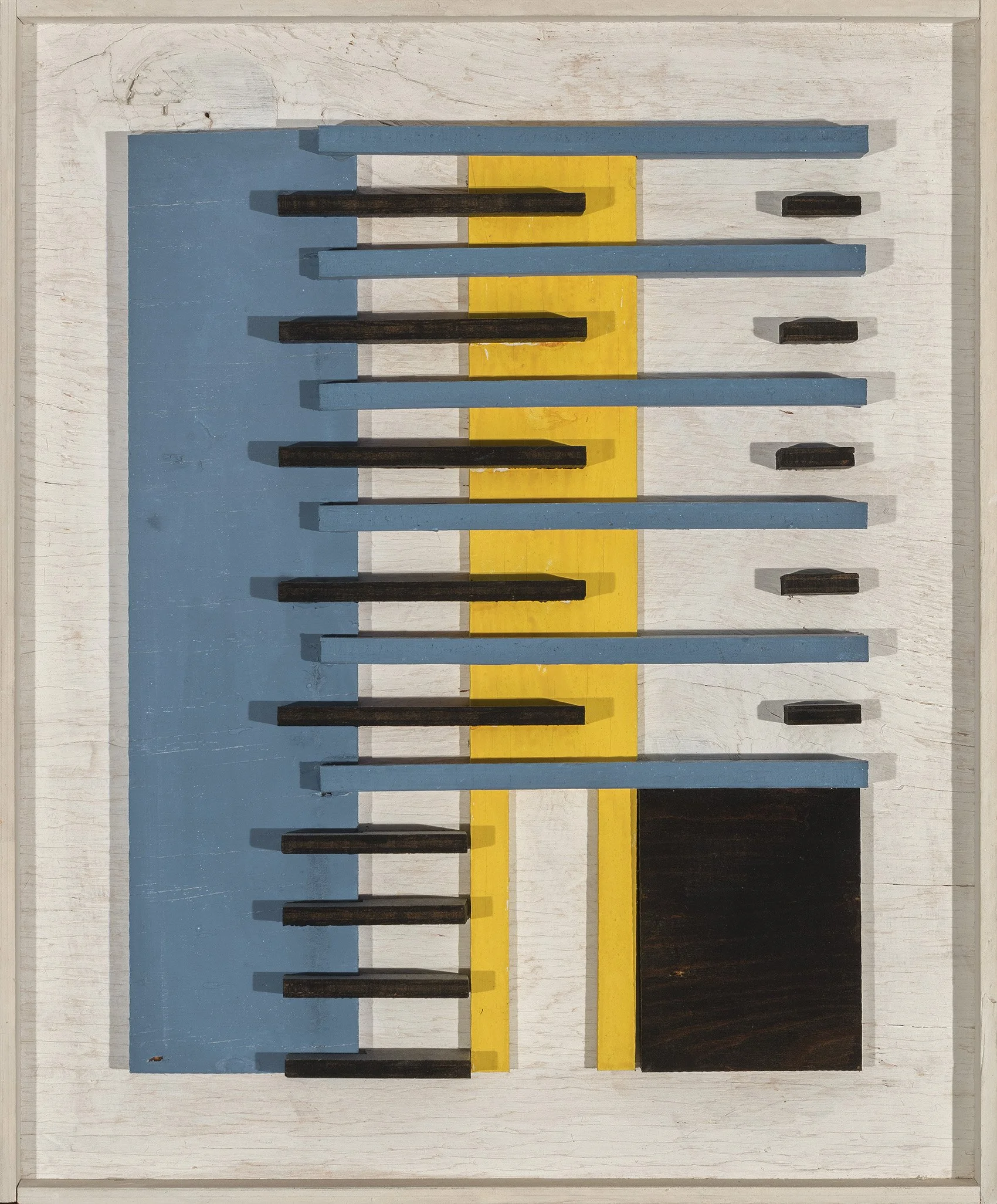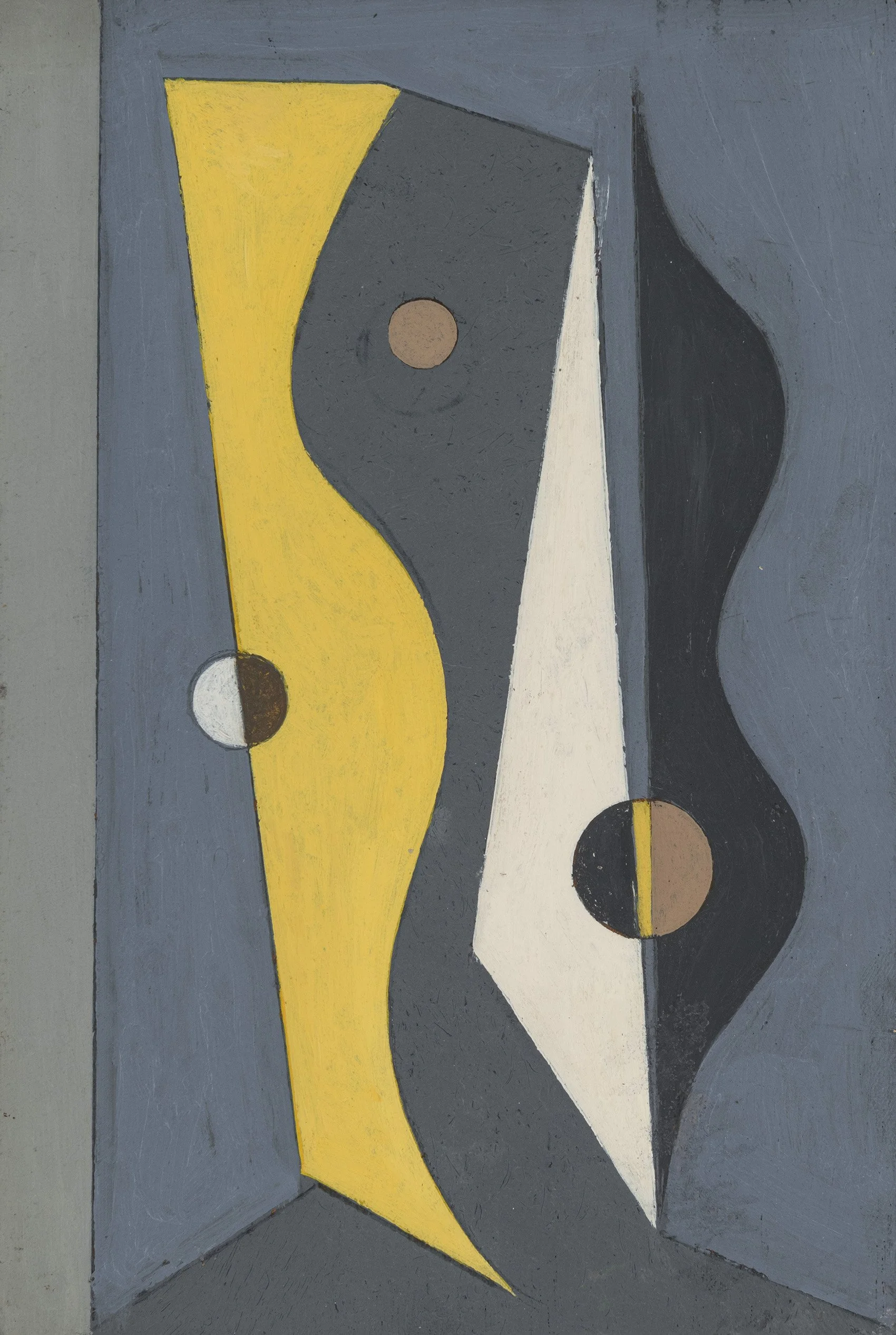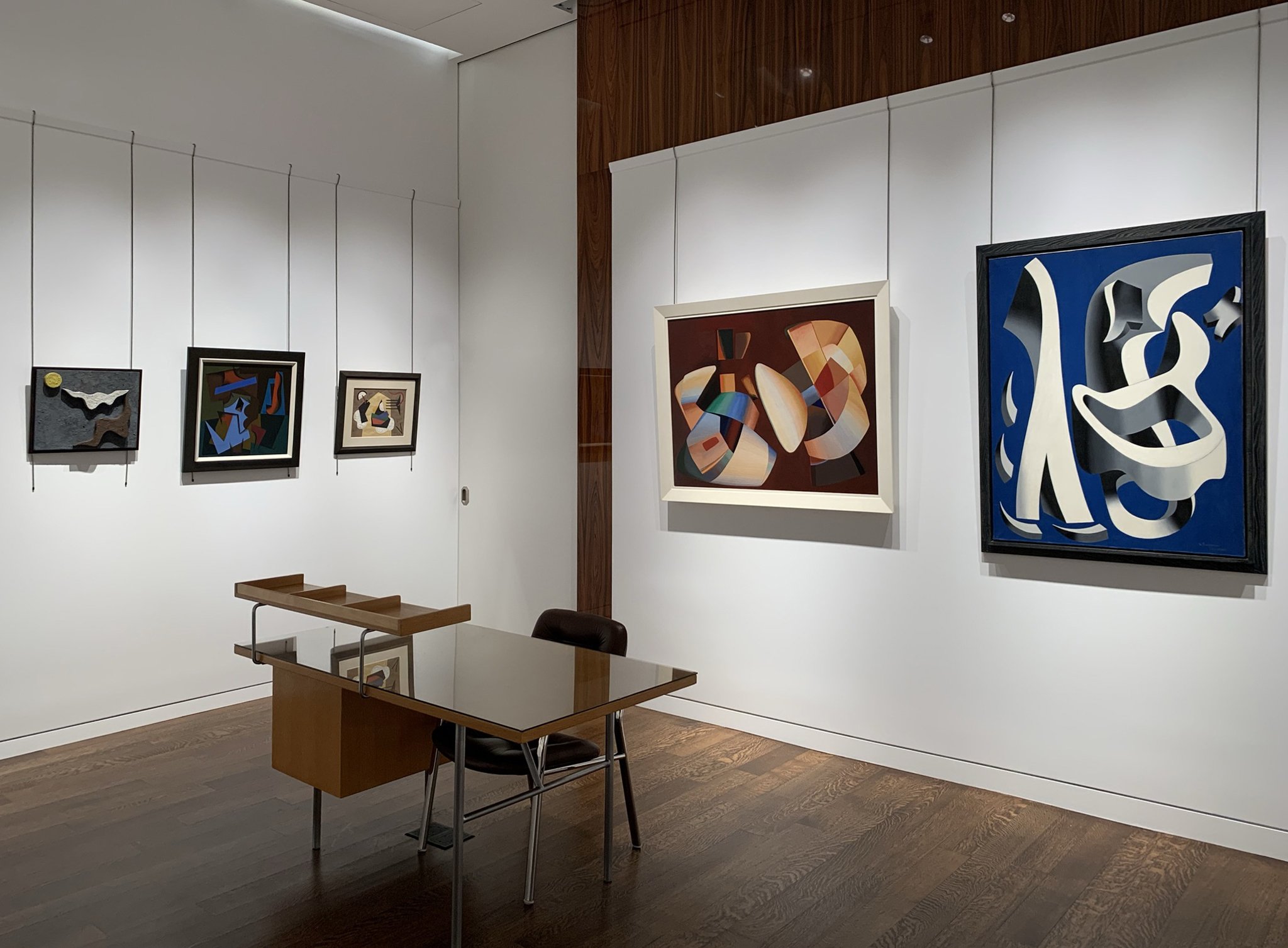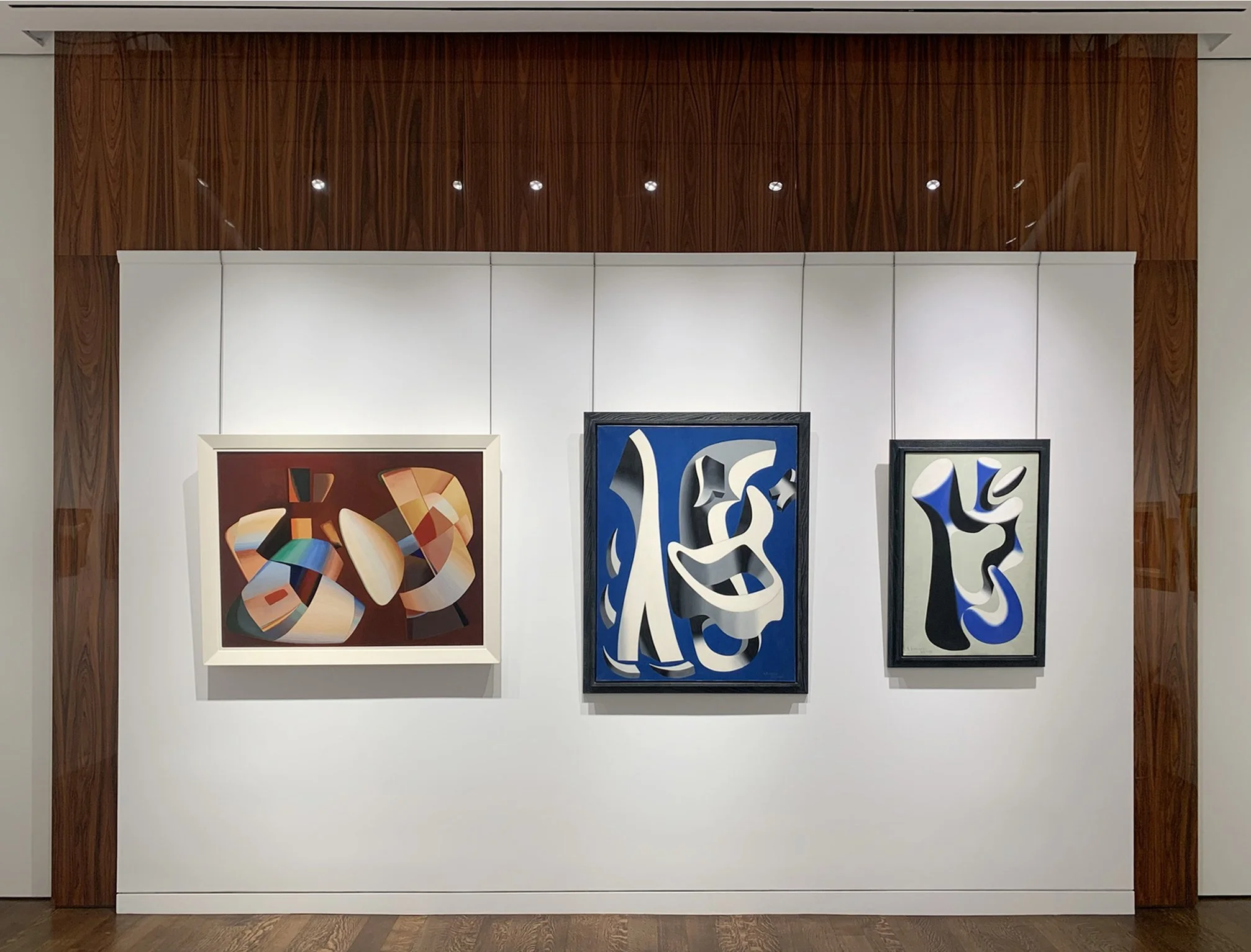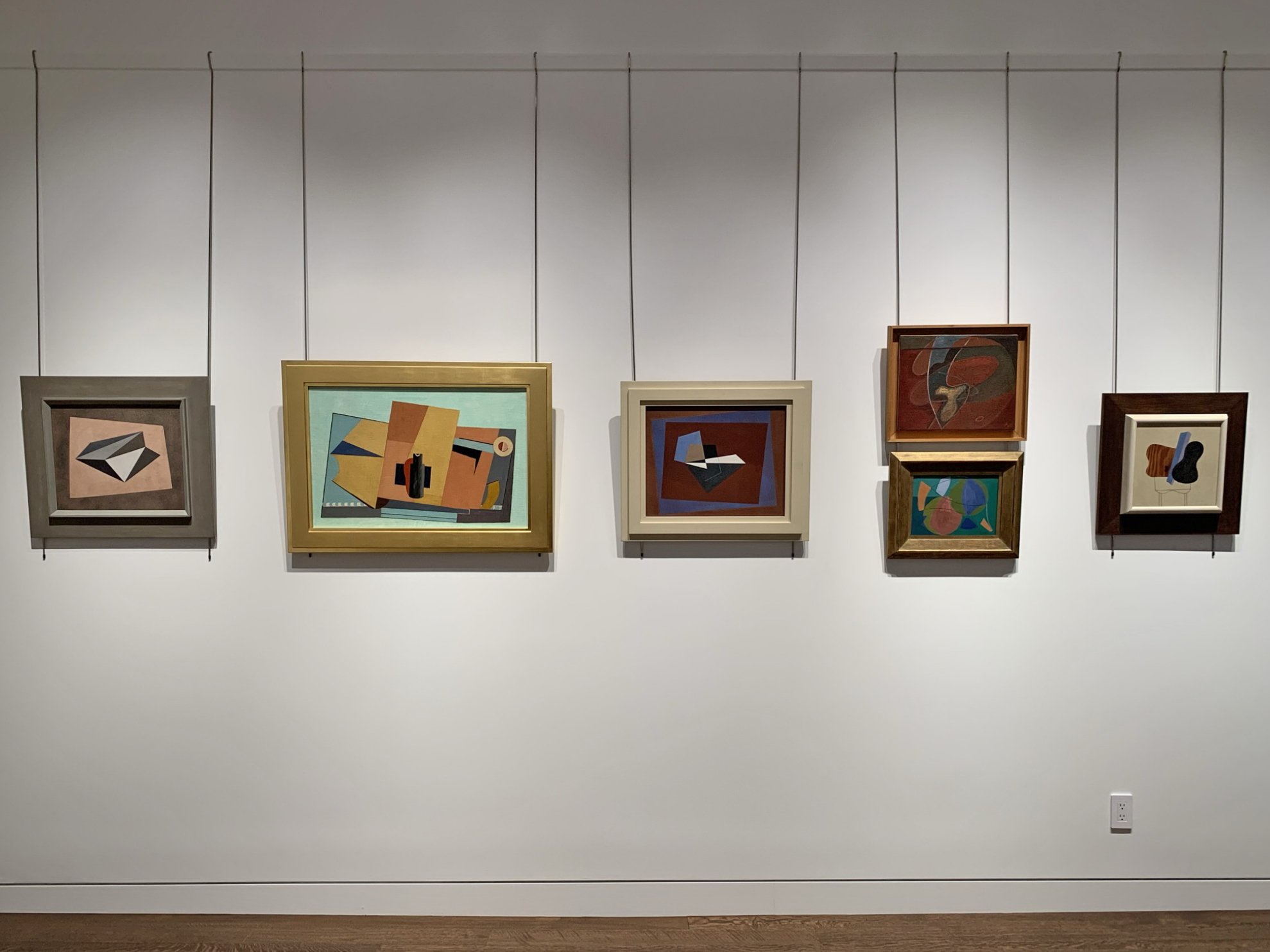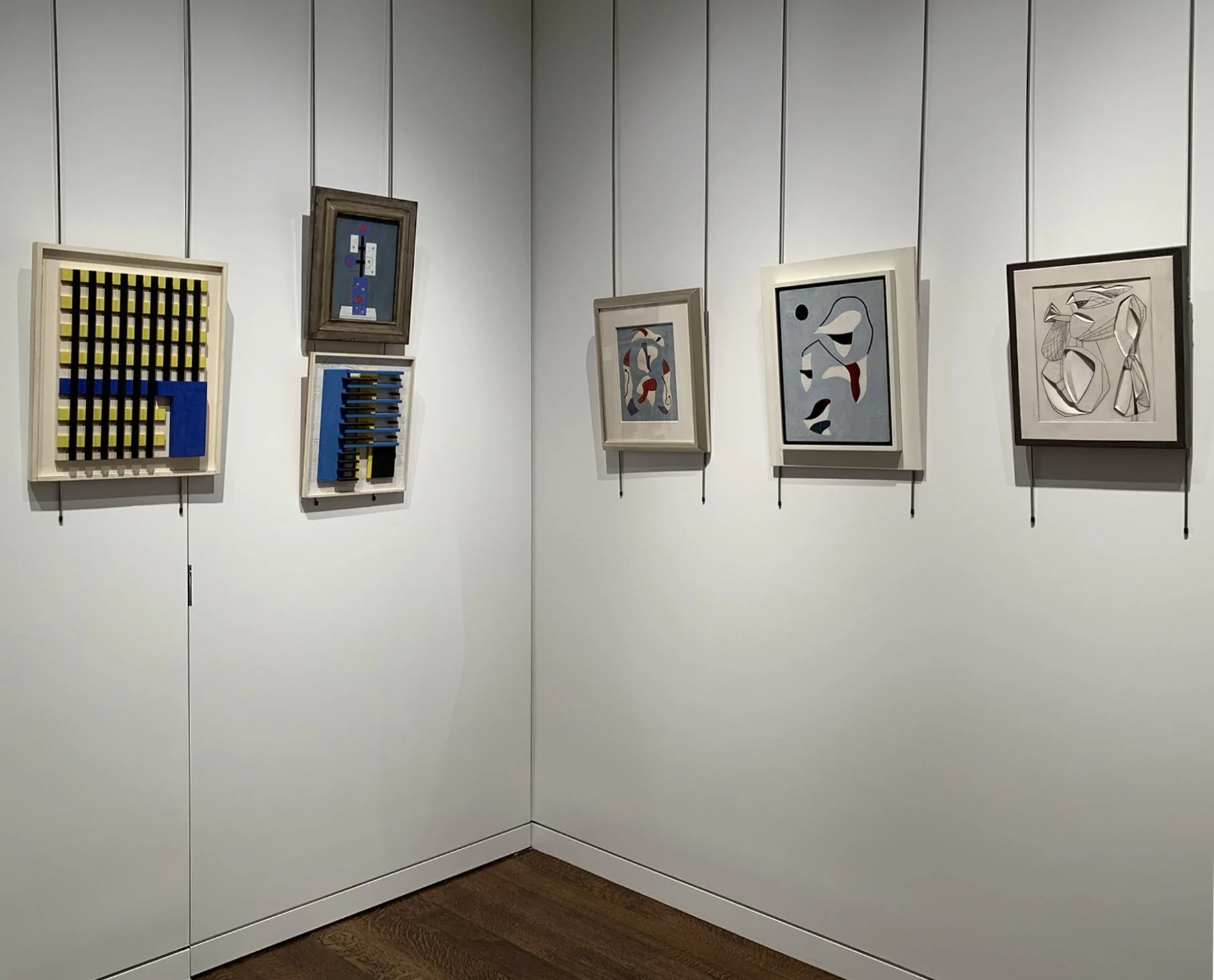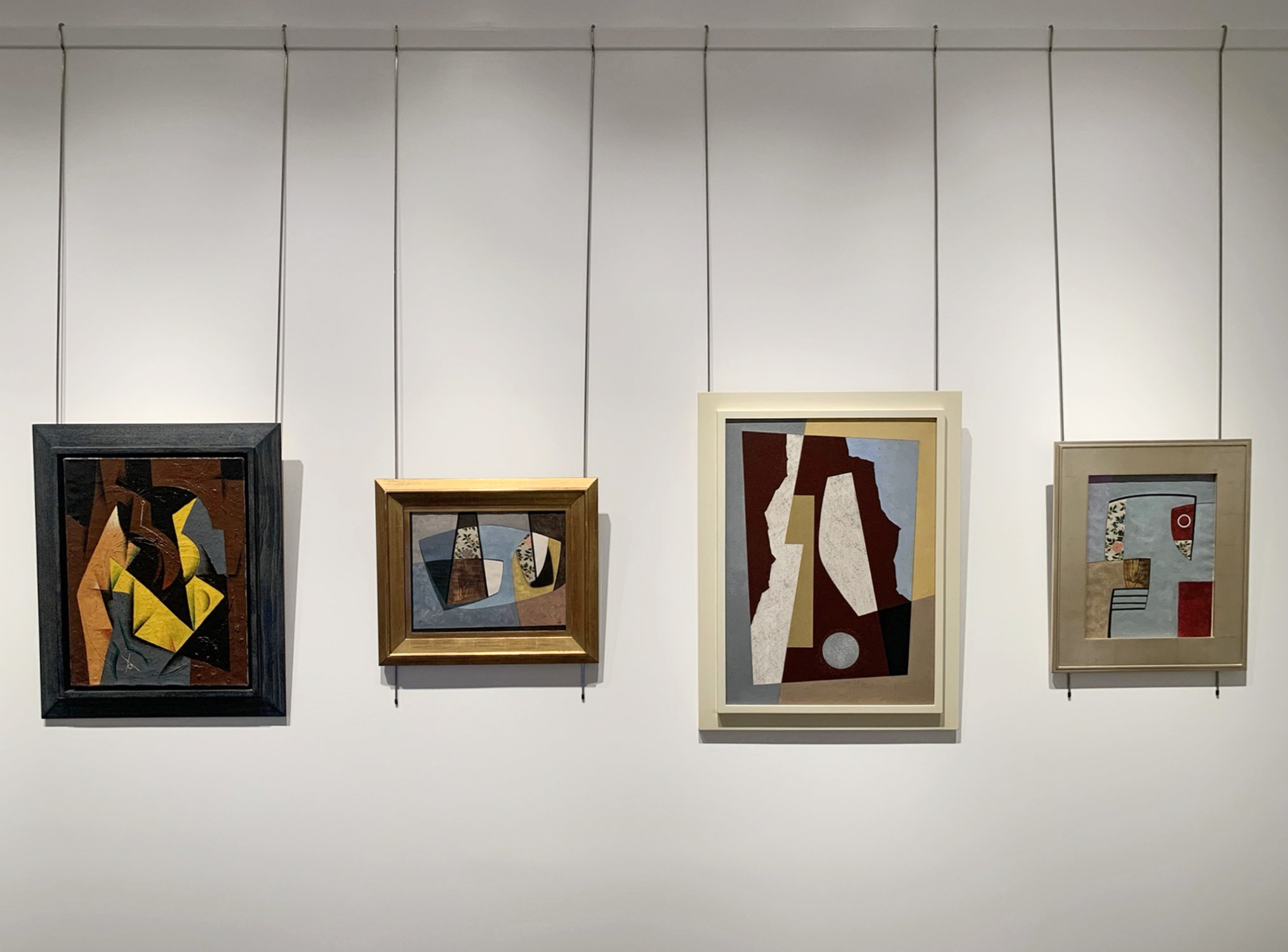May 13- July 30, 2021. Extended to August 20, 2021.
Read essay here | Installation views | Biographies | For pricing, please contact the gallery at 212-581-1657
Installation Views
Essay by Emily Lenz
Our exhibition features the work of Charles Biederman (1906-2004), John Ferren (1905-1970), A. E. Gallatin (1881-1952), George L. K. Morris (1905-1975), and Charles Green Shaw (1892-1974). The pivotal exhibition Five Contemporary American Concretionists was held at the Paul Reinhardt Galleries in March of 1936. The term “Concretionists” emphasized the non-objective style of the artists’ compositions and aligned with current discourse on abstraction in Paris. The Concretionists exhibition marked a turning point for American abstraction. Within the year, a larger group of artists would form the American Abstract Artists, joining together to create more exhibition opportunities.
Organized under the auspices of A. E. Gallatin’s Gallery of Living Art, the Five Contemporary American Concretionists exhibition included Biederman, Alexander Calder, Ferren, Morris, and Shaw. The exhibition was a protest against the exclusion of American painters in Alfred Barr’s Cubism and Abstract Art at the Museum of Modern Art, which opened that spring. The exhibition set in motion the idea that American abstract artists should be recognized. Both Biederman and Ferren had their first New York solo exhibitions in 1936 at Pierre Matisse Gallery. The Concretionists exhibition also created a new reciprocity between abstract artists in New York and Paris. When the exhibition traveled to the Galerie Pierre (Loeb) in June, Jean Helion, Joan Miró, Fernand Léger, Piet Mondrian, César Domela, and Wolfgang Paalen attended the Paris opening, along with Alfred Barr. In July the exhibition was held at London’s prestigious Mayor Gallery. Gallatin replaced Calder in the Paris and London exhibitions as he had recently resumed painting after a ten year hiatus. Gallatin, Morris, and Shaw joined Jean Arp and Sophia Tauber-Arp in 1936 to create the art publication Plastique, which furthered reciprocity of art ideas between New York and Paris by producing five issues through 1939.
In the New York opening of Five Contemporary American Concretionists, paintings dominated the exhibition. By the Paris iteration three months later, Shaw contributed four constructions (his first Plastic Polygon shaped canvas works) and Morris and Biederman exhibited collages alongside their paintings. Each of the artists were now exploring unusual materials. Biederman began his string reliefs in 1935 and gave up painting entirely by 1938 for constructions. Shaw made both his multi-sided Plastic Polygons and his biomorphic Reliefs from 1936 to 1938. Ferren had such success with his carved plasters, Pierre Matisse Gallery had an exhibition of them in 1938. The late 1930s brought a diversity of materials and styles within abstraction. Following the example set by the Paris-based Abstraction-Creation group, the Americans also embraced a mixture of biomorphic, Surreal, and geometric abstraction. Our exhibition includes one piece from the Concretionists exhibition, Charles Biederman’s Untitled, New York, June 1935. This sizeable oil at 48 x 32 inches has a flattened picture plane of interconnected elements and the suggestion of positive and negative space with slight shifts of color between the warm oval to the left and the cooler one to the right. Untitled, New York, June, 1935 exemplified the debates in New York and Paris between strictly geometric arrangements and biomorphic shapes held in space.
Our exhibition includes two significant string reliefs Biederman made in June of 1936. R-2, New York, June 1936 is mounted on unpainted wood with newspaper collage, metal shapes, and painted biomorphic outlines that suggest primitive figuration. In String Relief (White and Blue), New York, June 1936, an underlying abstract composition of gray, blue, and yellow is heightened by rubber and metal components and geometric arrangements of strings anchored by nail heads. Biederman likely sourced his materials at the hardware store. The work has elements of Dada with the materials, Constructivism with the radiating strings, Surrealism with the arrangement of coat hooks to resemble claws, and a palette identifiable with De Stijl. All these come together to create an artwork that is both mechanical and joyful.
Ferren’s Untitled, 1936 is a masterpiece and given its large size likely shown in both Ferren’s New York and Paris solo exhibitions that year. Ferren grew up in California then spent the 1930s in Paris so his New York connections where all made abroad. In the mid-1930s Ferren explored color and volume through simple shapes against a solid background. The compositional structure of Untitled, 1936 came about as Ferren and Jean Helion, both members of the Paris Abstraction-Creation group, worked to combine Léger’s style with the austerity of Constructivism. While Helion’s work has a gentle curve along each form’s edge to suggest a shallow depth, Ferren’s shapes twist into a deep picture plane and their defined edges solidify the composition. The fusion of expansiveness and hard-edged shapes seen in Untitled, 1936 demonstrate Ferren’s distinctively American approach to abstraction. From 1935 to 1937, Ferren executed 36 carved plasters using an etching technique to set the lines of the composition, which he then slowly carved into and applied color highlights to capture the effect of light. Our exhibition has one of these plasters from 1937.
Like Biederman and Ferren, Charles Green Shaw worked in both paintings and constructions following the New York Concretionists exhibition. Four of Shaw’s biomorphic reliefs are in our exhibition- one painted, one textured, and two in stained mahogany. Textured Relief, 1938 demonstrates Shaw’s use of sand in his paint, a method he learned in Paris from Ferren in 1935. Shaw wrote in his journal about the distinct quality of the edges he wanted in his constructions’ applied wooden shapes – like a good bar of soap. While biomorphic, the reliefs have clean edges and simplified forms, providing a streamlined appeal. The defined edges and In George L. K. Morris’s Mural Composition, 1936, geometric shapes in primary colors are balanced by strong black forms and curved collage elements of floral wallpaper. The work has Morris’s characteristic playfulness, on the formal level with the balance of geometric and biomorphic forms and bold and sensitive colors, as well as theoretically as the abstract shapes resemble dancing figures. Our exhibition features Gallatin’s No. 125, 1938-49, a painting included in the 1939 traveling museum exhibition of works by Gallatin, Shaw, and Morris. Gallatin composed No.125 as a flat arrangement of geometric shapes that come together as a desk top still life. The volumetric cylinder at the center resembles a bottle, the work’s only nod to classic Cubism. When the painting was first exhibited, Gallatin painted small flowers in the yellow in the upper left, perhaps a nod to his friend Morris and his wall paper. When he exhibited the painting again in 1949, he simplified the geometry further and painted over the flower details, the pentimenti gives the impression of embossed leather adding to the composition as a desk top still life.
Our exhibition includes over 30 works from 1933 to 1942 by the five artists included in the Paris version of Five Contemporary American Concretionists. Our exhibition highlights the rich diversity in developing pure abstraction in both style and materials. The five Concretionists tested the limits of what easel painting could be and led the way for the complete explosion off the wall seen in the 1960s with the shaped canvas movement. They also set the groundwork for New York to become a respected art capital and it soon became the home for many artists escaping the war in Europe.
